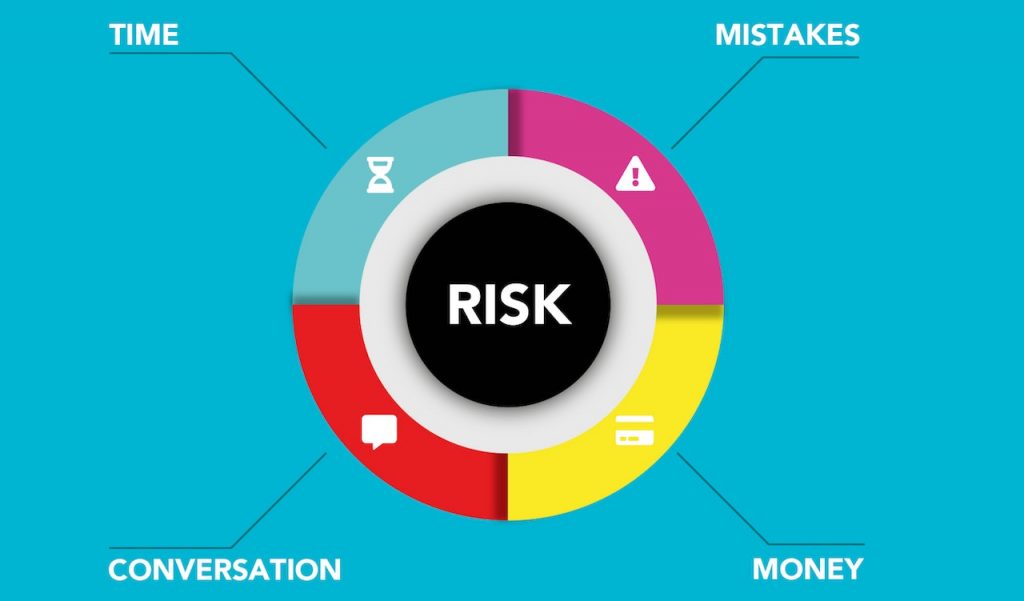Risk management is the process of evaluating, identifying, and prioritizing risks. With the correct resources, a company can minimize the impact of risky events and maximize opportunities. There are many components to risk management. The first step is to identify threats and vulnerabilities. After the risk assessment is done, the next step is to rank risks in order of importance and put risk management measures in place. (Also Read: 4 Steps to Start a Dropshipping Business With Shopify)
Table of Contents
Identifying threats
Identifying threats is an important part of risk management. Threats come in a variety of forms and can impact a business in several ways. Some are physical, such as fires or natural disasters. Others can be caused by vulnerabilities in systems and software. Other types of threats involve the disclosure of sensitive information. These can range from employee and customer data to intellectual property.

Identifying threats requires thorough research. There are many ways to do this, including gathering input from experts, reading industry trade publications, attending industry conferences, and obtaining case studies. Some sources may also provide statistics on crime rates or industry-specific metrics. Once you’ve found possible threats, you need to figure out how bad they are and how to best deal with them.
Using a risk matrix helps determine the likelihood and impact of potential threats. A threat’s severity is generally measured on a scale from negligible to catastrophic, and it should be ranked accordingly. To figure out how likely and bad a threat is, you should look at a number of things, such as the type of threat, where it’s most likely to happen, and whether it could hurt people, property, or your reputation.
The data used to assign a threat likelihood score is compiled by reviewing the sources of data. This information is then analyzed for consistency and agreement between different sources. Once you’ve determined which sources are reliable, you can assign a threat likelihood score to the potential threats. If the score is high, it means that a threat is more likely to happen.
Identifying threats is a vital part of risk management. It allows you to minimize harmful events and protect your business from financial loss. It also allows you to prepare for future crises. If you’re preparing for a natural disaster, you can prepare yourself and your employees by taking measures to minimize damage.
There are two basic categories of threats: man-made threats and natural threats. Man-made threats are those that have targeted a specific facility. Natural threats are those that affect nearby facilities periodically. The type of assets you have in your facility affects its risk. For example, a facility that deals with heavy industrial machinery has a higher risk of serious accidents.
Prioritizing risks
Risk prioritization helps you focus on high-impact, high-probability risks. It also helps you chart risks by severity and likelihood, making them easier to understand. Prioritizing risks in a risk management matrix can be useful if you want to make sure that all risks in your project get the same level of attention.
Identifying high-impact risks can be a tricky process, which often requires specialized expertise or group techniques. Risk priorities need to be reviewed regularly, especially if the severity of risks changes. It is also a good idea to measure the effects of risks and put a dollar value on them.
Risks are usually prioritized based on their likelihood of occurrence and their impact on the business or project. These are often listed on a risk register. The operations project manager can then categorize them by their severity and probability, and qualitatively rank them based on their likelihood of occurring. A one-to-five scale shows how likely something is to happen, while a five-star scale shows how likely something is to happen.
The sensitivity of the risk determines how quickly the risk should be addressed. Some risks are highly sensitive to certain conditions, while others are not as vulnerable to them. Sensitivity determines which risks require more attention and are therefore ranked higher. It is also important to consider the stakeholder interest in a risk.
There are many different risks that can be categorized in terms of importance, and each risk has its own priority. Some are critical and require immediate attention. Others are low-priority and do not pose a significant threat to the project. These low-priority risks are less critical and do not have much impact on the overall project budget or schedule.
Risk prioritization helps organizations identify which risks are most important to their business. The process involves evaluating risks to the organization and deciding which ones are more likely to occur. This helps managers decide where they should focus their efforts to mitigate the risks that are most impactful. A risk matrix can be useful in this process.
Prioritizing risks is essential to prevent negative impacts. In addition to the cost to the company, risk also affects human life and should be addressed appropriately. Risk management is an ongoing process, and it requires constant monitoring.
Mitigating risks
Mitigating risks is a critical element of risk management. It involves researching data about risks and determining their likelihood and significance. The next step is to decide what mitigation approaches should be taken to address those risks. The mitigation plan is then created and submitted to the decision makers. The next step is to keep track of risks, figure out what will happen if they happen, and use the strategies that the risk analysis suggests.
There are several different types of risk mitigation. Some strategies focus on reducing the likelihood of a particular risk, while others focus on controlling its consequences. It is important to involve all stakeholders in identifying and measuring risks. Mitigating risks should not be an afterthought or a waste of time.
Effective risk mitigation requires regular monitoring and evaluation. In addition to identifying risks, regular reporting helps management plan better. It is also important to ensure that all stakeholders share the same goal and that no one is working for personal gain. This ensures that all parties stay on the same page and uphold the business’s interests and ethics.
A risk mitigation plan can include a change control process, which is used when a project changes. This process helps to manage risks by ensuring that changes are safe and reducing their impact. By understanding and preparing for risks, a team can avoid losses and protect their reputation. There are several other risk mitigation strategies that can be employed in project management.
Mitigating risks can reduce stress and increase the efficiency of a project. It also improves communication with stakeholders. In addition, good risk management builds trust among stakeholders and team members. With effective risk management, stakeholders can be confident in the project’s success. So how do you implement effective risk mitigation techniques?
When developing a risk mitigation plan, you need to identify different kinds of risks and analyze their impacts. Once you know which risks are low, medium, or high, you can implement strategies that will help mitigate them. You should also record all of your risk analysis results in a risk register.
Managing risks
Project risk management begins with a clear definition of project objectives and scope. The team should be involved in risk identification and assessment at each stage of the project. By identifying risks early on, the project can be well-positioned to address them. In addition, it can be easier to address risks if everyone on the team is involved.
Modern organizations face new and complex risks, including those related to globalization and digital technology. Some risk experts label these new threats as “threat multipliers.” A recent example is the coronavirus pandemic, which began as a supply chain issue but quickly became an existential threat. As a manager, it’s essential to understand the broad range of risks and take action to mitigate them.
Managing risks requires continuous attention. Regular project status meetings should include reviews and updates of risks. As the project progresses, the list of risks will grow and change. Therefore, project managers should have dedicated risk workshops to review and assess new risks and identify the appropriate responses to them. It is also helpful to check the risk list every so often to make sure that risks are being dealt with and reduced.
In addition to identifying internal risks, there are also external risks, such as natural disasters and major macroeconomic shifts. These external risks are unavoidable, but companies must focus on identifying and mitigating their impacts. Managing risks is a necessary part of running a business. In this way, it can help the company prepare for future events and minimize costs.
Managing risks is critical to the success of any project. Even the best-planned project is subject to uncertainties. A failure to identify and manage project risks can lead to project failure. By identifying and managing risk factors, the project manager can increase the probability of positive outcomes while reducing the probability of negative outcomes. Risk management should be collaborative and involve everyone on the project team.
When managing risks, it is essential to identify who is responsible for each risk. This is essential in limiting the effects of issues and avoiding duplication of effort. When employees are given the power to manage risks, they can also help reduce the bad effects of problems. (Also Read: How to Launch a Successful Business)













